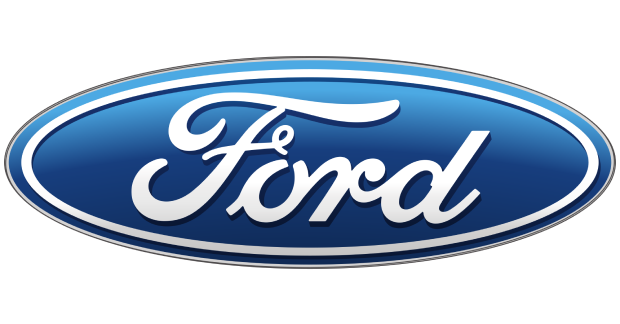Market Size of united states commercial vehicles Industry
|
|
Study Period | 2017 - 2030 |
|
|
Market Size (2024) | USD 165 Billion |
|
|
Market Size (2030) | USD 240.1 Billion |
|
|
Largest Share by Vehicle Body Type | Light Commercial Pick-up Trucks |
|
|
CAGR (2024 - 2030) | 6.45 % |
|
|
Fastest Growing by Vehicle Body Type | Buses |
Major Players |
||

|
||
|
*Disclaimer: Major Players sorted in no particular order |
United States Commercial Vehicles Market Analysis
The United States Commercial Vehicles Market size is estimated at 165 billion USD in 2024, and is expected to reach 240.1 billion USD by 2030, growing at a CAGR of 6.45% during the forecast period (2024-2030).
165 Billion
Market Size in 2024 (USD)
240.1 Billion
Market Size in 2030 (USD)
2.85 %
CAGR (2017-2023)
6.45 %
CAGR (2024-2030)
Largest Segment by Vehicle Body Type
72.37 %
value share, Light Commercial Pick-up Trucks, 2023
Light commercial pick-up trucks dominate due to their versatility in urban and rural areas, high demand from small businesses, and suitability for a range of tasks from delivery to construction.
Largest Segment by Fuel Category
68.14 %
value share, Gasoline, 2023
Gasoline remains the largest segment due to the widespread refueling infrastructure, lower upfront vehicle costs compared to alternatives, and long-standing consumer familiarity with gasoline engines.
Fastest-growing Segment by Fuel Category
36.61 %
Projected CAGR, FCEV, 2024-2030
FCEVs are growing rapidly due to advancements in hydrogen technology, significant investments in hydrogen fueling infrastructure, and increasing focus on zero-emission vehicles.
Leading Market Player
30.04 %
market share, Ford Motor Company, 2023

Ford Motor Company is a significant player in the US commercial vehicle market, utilizing its engineering and R&D capabilities. The company operates many factories worldwide.
Second leading Market Player
26.32 %
market share, General Motors Company, 2023

General Motors is the second leading player in the US, benefiting from its focus on full-size pickup truck retail market. Its subsidiaries sell vehicles under various brands.
The diversity of commercial vehicles in the United States is driven by a robust economy, with demands ranging from urban delivery vans to long-haul trucks
- The commercial vehicle market is undergoing constant evolution due to factors like increased traffic in goods, globalization of regional value chains, advancements in drive technology, and a heightened focus on safety. Since 2005, fuel prices have been on a steady rise, impacting the growth of diesel trucks. Additionally, fuel producers in the United States are operating at near-maximum capacity, leaving little room for production expansion.
- The onset of the pandemic led to unprecedented disruptions in the commercial vehicle industry's supply chains. Lockdowns and other restrictions imposed globally resulted in mobility and travel limitations of an unprecedented scale. Industries heavily reliant on transportation, such as infrastructure and logistics, came to a standstill, presenting new hurdles for the manufacturing and freight sectors.
- With the surging demand for electric and hybrid vehicles, several countries have prioritized upgrading their electric vehicle charging infrastructure. Consequently, numerous policies and incentives have been introduced to foster infrastructure growth. The US government has taken the lead in enacting legislation to promote electric vehicle adoption, aiming to phase out gasoline and diesel vehicle production by 2040, with a majority of vehicles running on batteries. Governments and municipalities have also implemented incentives and regulations to expedite the shift toward sustainable mobility. By 2030, the US government plans to establish 500,000 public chargers, catering to all vehicle types and technologies.
United States Commercial Vehicles Industry Segmentation
Commercial Vehicles are covered as segments by Vehicle Type. Hybrid and Electric Vehicles, ICE are covered as segments by Propulsion Type.
- The commercial vehicle market is undergoing constant evolution due to factors like increased traffic in goods, globalization of regional value chains, advancements in drive technology, and a heightened focus on safety. Since 2005, fuel prices have been on a steady rise, impacting the growth of diesel trucks. Additionally, fuel producers in the United States are operating at near-maximum capacity, leaving little room for production expansion.
- The onset of the pandemic led to unprecedented disruptions in the commercial vehicle industry's supply chains. Lockdowns and other restrictions imposed globally resulted in mobility and travel limitations of an unprecedented scale. Industries heavily reliant on transportation, such as infrastructure and logistics, came to a standstill, presenting new hurdles for the manufacturing and freight sectors.
- With the surging demand for electric and hybrid vehicles, several countries have prioritized upgrading their electric vehicle charging infrastructure. Consequently, numerous policies and incentives have been introduced to foster infrastructure growth. The US government has taken the lead in enacting legislation to promote electric vehicle adoption, aiming to phase out gasoline and diesel vehicle production by 2040, with a majority of vehicles running on batteries. Governments and municipalities have also implemented incentives and regulations to expedite the shift toward sustainable mobility. By 2030, the US government plans to establish 500,000 public chargers, catering to all vehicle types and technologies.
| Vehicle Type | |||||||
|
| Propulsion Type | ||||||||
| ||||||||
|
United States Commercial Vehicles Market Size Summary
The United States commercial vehicles market is experiencing a transformative phase driven by several key factors, including the globalization of regional value chains, advancements in drive technology, and an increased emphasis on safety. The market is adapting to the rising demand for electric and hybrid vehicles, spurred by government initiatives and policies aimed at promoting sustainable mobility. The U.S. government has been proactive in enacting legislation to phase out gasoline and diesel vehicles by 2040, with a significant focus on expanding electric vehicle charging infrastructure. This shift is further supported by incentives and regulations at both federal and state levels, encouraging the adoption of zero-emission vehicles. The market's evolution is also influenced by the challenges posed by the pandemic, which disrupted supply chains and impacted industries reliant on transportation.
The commercial vehicle market in the United States is poised for growth, with a notable increase in the demand for electric commercial vehicles. This growth is fueled by the booming e-commerce sector, heightened logistics activities, and governmental efforts to promote cleaner transportation solutions. The market is fairly consolidated, with major players like Daimler AG, Ford Motor Company, General Motors Company, Ram Trucking, Inc., and Toyota Motor Corporation dominating the landscape. These companies are actively investing in electric mobility, as evidenced by recent product launches and strategic plans aimed at transitioning to electric vehicles. The push towards electrification is expected to significantly boost the market, particularly in the coming years, as the country aims to enhance its electric vehicle infrastructure and reduce carbon emissions.
United States Commercial Vehicles Market Size - Table of Contents
-
1. MARKET SEGMENTATION (includes market size in Value in USD and Volume, Forecasts up to 2030 and analysis of growth prospects)
-
1.1 Vehicle Type
-
1.1.1 Commercial Vehicles
-
1.1.1.1 Buses
-
1.1.1.2 Heavy-duty Commercial Trucks
-
1.1.1.3 Light Commercial Pick-up Trucks
-
1.1.1.4 Light Commercial Vans
-
1.1.1.5 Medium-duty Commercial Trucks
-
-
-
1.2 Propulsion Type
-
1.2.1 Hybrid and Electric Vehicles
-
1.2.1.1 By Fuel Category
-
1.2.1.1.1 BEV
-
1.2.1.1.2 FCEV
-
1.2.1.1.3 HEV
-
1.2.1.1.4 PHEV
-
-
-
1.2.2 ICE
-
1.2.2.1 By Fuel Category
-
1.2.2.1.1 CNG
-
1.2.2.1.2 Diesel
-
1.2.2.1.3 Gasoline
-
1.2.2.1.4 LPG
-
-
-
-
United States Commercial Vehicles Market Size FAQs
How big is the United States Commercial Vehicles Market?
The United States Commercial Vehicles Market size is expected to reach USD 165.04 billion in 2024 and grow at a CAGR of 6.45% to reach USD 240.12 billion by 2030.
What is the current United States Commercial Vehicles Market size?
In 2024, the United States Commercial Vehicles Market size is expected to reach USD 165.04 billion.

